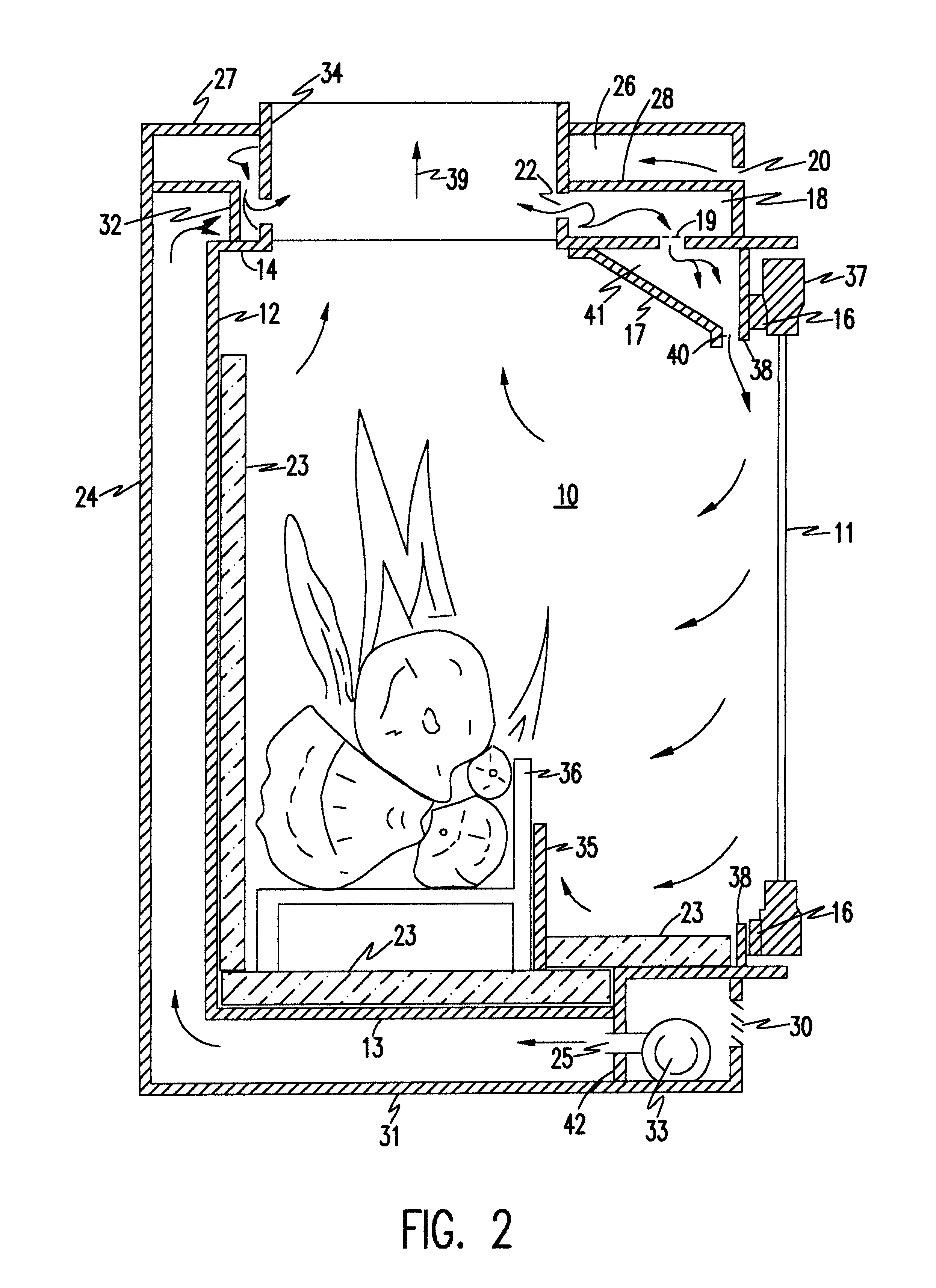Wood heater
a wood heater and solid fuel technology, applied in the direction of gaseous heating fuel, stoves or ranges, ways, etc., can solve the problems of poor or unpredictable performance, difficult control of operator performance, and circumvent the intent of mandating
- Summary
- Abstract
- Description
- Claims
- Application Information
AI Technical Summary
Benefits of technology
Problems solved by technology
Method used
Image
Examples
Embodiment Construction
For illustrative purposes only a wood heater is described herein. It will be well appreciated that the description herein is of but one preferred embodiment of the invention and is not to be construed as limiting the scope of the invention in any manner. Furthermore, the invention described here is considered a base technology which can be implemented in a variety of applications and the illustrated embodiment should not be construed as limiting the scope of further applications of the combustion system such as a coal burning system and the like.
The Combustion Chamber
Referring now to the drawings, and more particularly to FIGS. 1 and 2, there are shown a perspective cut away view and a side sectional view of the combustion system of the present invention. In the preferred embodiment, a combustion chamber 10 is defined by vertical front wall 38, rear wall 12 and side walls 15. The bottom and top of the combustion chamber are defined by horizontal panels 13 and 14,respectively. In the...
PUM
 Login to View More
Login to View More Abstract
Description
Claims
Application Information
 Login to View More
Login to View More - R&D
- Intellectual Property
- Life Sciences
- Materials
- Tech Scout
- Unparalleled Data Quality
- Higher Quality Content
- 60% Fewer Hallucinations
Browse by: Latest US Patents, China's latest patents, Technical Efficacy Thesaurus, Application Domain, Technology Topic, Popular Technical Reports.
© 2025 PatSnap. All rights reserved.Legal|Privacy policy|Modern Slavery Act Transparency Statement|Sitemap|About US| Contact US: help@patsnap.com



